Sign up to the BBC Bitesize newsletter! External LinkSign up to the BBC Bitesize newsletter!
For home education news and stories plus updates on the latest Bitesize content, register for our newsletter today.

When you think of children’s ‘life skills’ you might think of cooking, sewing, budgeting, changing a plug - all of which are types of basic life skills you can teach your child at home.
But there are other transferable skills, such as communication, empathy and self control. These are sometimes referred to as ‘soft skills' because they’re about us as a person rather than a measurable ‘hard’ or job-specific skill like being able to operate a forklift truck.
You can teach all sorts of life skills at home to help your child to lead a fulfilling, independent adult life.
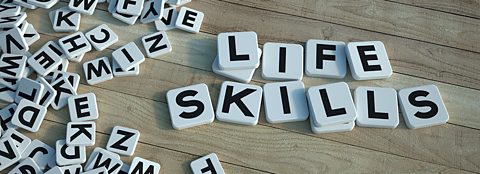
What are life skills?
UNICEF, the United Nations agency for children, defines transferable life skills as: communication, creativity, problem-solving, empathy, respect for diversity and critical thinking.
Child development scientist Ellen Galinsky describes them in her book, Mind in the Making: The Seven Essential Life Skills Every Child Needs, as: focus and self control, perspective taking, communicating, making connections, critical thinking, taking on challenges and self-directed engaged learning.
We've combined these definitions to help you focus on the seven key life skills you can help your child to develop through home education.
What are the seven essential life skills?
1. Good communication and making connections
Chartered member of the British Psychological Society, Dr Abigail Wright, says: “Communication is very individual for every child, but connection is the basis of that.” Make sure you feel connected to your child: sit alongside them, join in something they’re interested in, or simply get down on their level, to form the foundation for good communication.
You can help your child develop language, communication and listening skills from when they’re a baby: talk to them, maintain eye contact and use words to label people and objects.
Depending on your child’s individual needs and abilities, you can then build on the three types of communication as they get older, all of which your child can use with friends, family and at work:
written
verbal
non-verbal
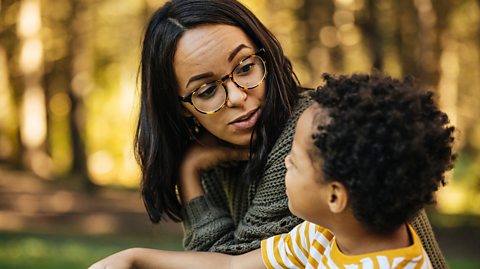
The three types of communication
Practise communicating via letters, leaflets, email, text and online chat, and talking to different people in-person. Encourage your child to call their grandparents for a conversation, or if you go out to a cafe, see if your child feels comfortable placing their own order with the waiting staff. If they’re not ready to do that, you can model how to do it appropriately.
At home, use role play to practise the three different types of effective communication, for example by pretending to be a hotel receptionist. Give examples of things they might need to do, such as respond to emails, welcome customers and deal with complaints in-person, online or on the phone.
When it comes to making connections, children will learn through observing your behaviour and through practise with their peers, relatives and exposure to other children and adults.
Dr Abigail Wright highlights that it’s important your child feels regulated, safe and comfortable before you can begin to build these connections: “Know your child well, know what works for them, and match the environment to that.”
For more information take a look at these Bitesize guides: Communication is about more than words, and: Writing skills - tone and style.
2. Taking on challenges and problem solving
Dr Wright explains children need to feel safe and understand that taking on a challenge will result in something positive. Point this out to them each time they put effort into something, such as: "you concentrated really hard and now you’re able to write your name for grandma."
Depending on their developmental stage, if a child understands why they’re doing something challenging, they’re more likely to do it. She also recommends making it as fun as possible. So, if you want to practise times tables, march around the room chanting them, or put some music on. With chores, see if they can help you throw the laundry into the washing basket!
Dr Wright says it’s also important to normalise something feeling scary. Characters in books and television shows can be useful: often they face a dilemma or problem that needs solving, and push through the discomfort and worry to succeed in the end.
You can also use real-life scenarios such as planning a budget for a supermarket trip: how can you get what you need within the budget, which items do you definitely need and which could you live without? Are there any special offers and discounts, or could you bulk buy an item to save money?
All of this requires research skills, critical thinking, decision making, logical reasoning, and potentially teamwork, communication and conflict resolution if you’re doing it together.
You can ask an older child to devise a challenge for them, and you, to complete, whether that’s walking round the block every lunch time, doing ten burpees a day, or practising another skill for ten minutes a week.
Of course, board games, cards, crosswords, brain teasers and maths questions are also good for learning problem solving.
See more ideas in these six challenges for family fun and six challenges to get out of your comfort zone.
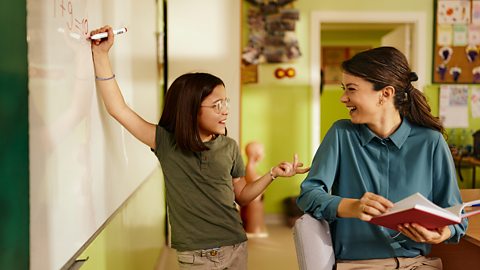
3. Focus and self-control
Parents play a big role in modelling how to cope when things get tricky. Don’t be hard on yourself if you don’t always keep your cool when things go wrong or get frustrating. Just try and be mindful that your child will be observing you and how you react in different situations.
Dr Wright recommends encouraging reflection and self-awareness in your child. Ask them to consider: "how do I feel when I do certain things?" or: "how did I feel when that kid took my toy in the sandpit?"
Depending on your child’s individual development, this reflection can begin at an early age. Talk about cause and effect: "This happened and as a result this happened. If we did it differently, what would happen then?"
You can read this BBC Bitesize article on talking to your kids about their emotions and then, with your child, go through these articles about managing your emotions and staying calm.
Focus takes practice. Use some of the tips in our article on independent learning to help your child, such as creating the right environment and setting timers for short periods of focus to begin with.
4. Empathy and ‘perspective-taking’
Dr Wright says: “Perspective-taking is being aware there’s another way of looking at things, whereas empathy is more complex. It starts with early relationships and experiencing how people do that with them… Create environments, activities and situations where children get to practise safely. For example through play, interaction, stories or a child’s interests.”
It can be really helpful to use characters in books and television, or pictures of people and faces, depending on your child. Ask them why a person or character is thinking a certain way. Stories tell us a lot about someone’s emotions, helping us learn about other people’s lives and perspectives.
Dr Wright continues: “Adults are the mirror: they’re creating a mind map of how things should work according to how they model behaviours. Be a safe adult and provide opportunities where [your child] can practise.”
Don’t forget listening skills: focus on what your child is really saying or communicating, and encourage them to do the same with you.
Learn how reading can build empathy and the three simple ways to increase empathy, or delve into the BBC Teach: Empathy Day resources.
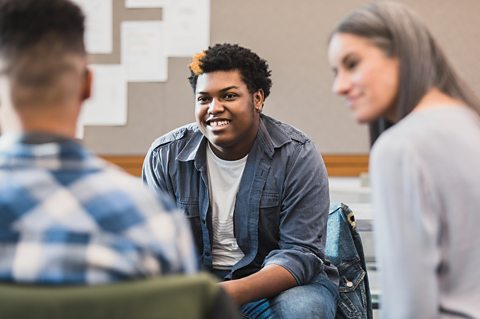
5. Respect for diversity
You can teach younger children about respecting differences and diversity by asking them to discuss with you or another family member how you are different from one another and why that’s a good thing. They could then draw a picture with the differences and similarities between you, and what they’ve learned about you that they didn’t know before.
With older children, books, television, current affairs, art, culture and museums all teach them about diversity and living in a diverse society. Encourage age-appropriate discussion about conflicts that are happening at school or around the world that have a basis in people failing to understand one another. You could incorporate history, geography and English learning.
The BBC Teach: Diversity collection has lots of useful resources.
6. Critical thinking
Problem solving is one aspect of critical thinking. Other aspects include analytical thinking: looking at a problem or situation objectively, creativity, and keeping an open mind. You can foster these skills in your child by encouraging dialogue, if they’re able, and curiosity. That means, where possible, answering the seemingly endless ‘why’ questions!
Encourage friendly debate too, such as why one ice cream flavour is better than another, or what three rules they’d put in place if they were Prime Minister. You can use pictures and visual cues with non-verbal children to encourage them to think critically.
Talk about the media and fake news. Discuss how they know whether information on the news or social media is reliable. What sources did the person use to get the information? What is their agenda when relaying the information? Expose them to as many means of sourcing information as possible: books, videos, podcasts, libraries and safe internet searching.

You could also ask your child to devise a questionnaire around something they’re interested in, whether it’s their friends’ favourite hobbies or neighbours’ opinions on recycling locally. You can also work on your own critical thinking.
See our guide for younger children on how to be safe online, our schooling tips for parents of autistic children and the BBC Sounds series Bringing up Britain with an episode exploring how to nurture critical thinking skills in children and young people.
7. Self-directed and engaged learning
There are lots of ways you can help your child to learn independently. Before you get started, go back to the basics of making sure your child is regulated, safe and comfortable, and then you can begin to encourage them to explore beyond their comfort zone.
A great way to get your child engaged in learning, and something that can be explored well at home, is harnessing your child’s natural interests. Say your child is really into painting, use that as a springboard into any number of topics, from the human body to animals to Shakespeare.
Depending on your child’s age and needs, you can either have a creative box or area that they know how to access independently, or get them set up with the tools they need, and then sit nearby or in the same room as they get going. You may find your child needs you with them to begin with, then gradually becomes happier with you doing jobs nearby or in the next room. You know your child best!
Read our advice on how to transform a smaller space for study plus five ways to keep your children occupied (and learning!) at home.
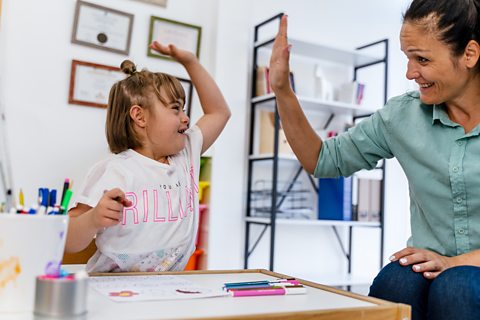
Where can I read more about life skills?
BBC Bitesize has further reading to help you explore more life skills activities.
Five ways to help your child move towards a growth mindset
Where can I find more support for home education and parenting?
The BBC Bitesize home education collection is designed to support you and your child’s learning at home with free resources for early years and foundation stage (EYFS), primary and secondary-age students.
Bitesize Parents’ Toolkit is the go-to place for the whole parenting community to find stories, expert advice and fun activities.
If your child has special educational needs and / or disabilities, be sure to check out the Parents’ Toolkit SEND collection. Bitesize also has a collection of Sensory Stories, an immersive video series that transports you on unique sensory adventures, for children with additional or complex needs.
For more information about home education, these BBC News articles cover the rise in families deciding to educate their children at home and, from 2021, the impact of Covid on home education.